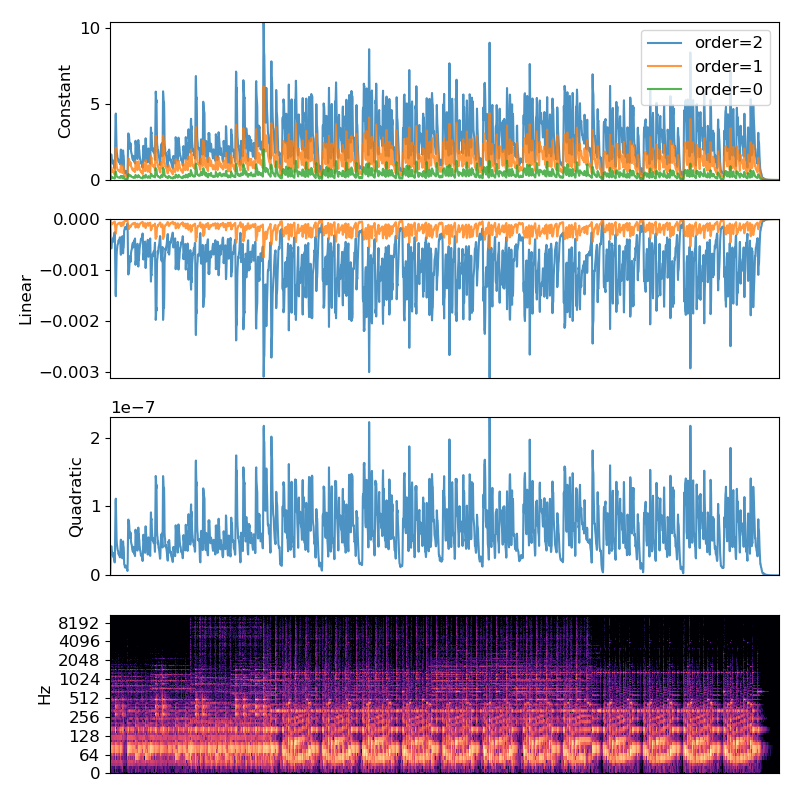librosa.feature.poly_features¶
-
librosa.feature.poly_features(y=None, sr=22050, S=None, n_fft=2048, hop_length=512, order=1, freq=None)[source]¶ Get coefficients of fitting an nth-order polynomial to the columns of a spectrogram.
Parameters: - y : np.ndarray [shape=(n,)] or None
audio time series
- sr : number > 0 [scalar]
audio sampling rate of y
- S : np.ndarray [shape=(d, t)] or None
(optional) spectrogram magnitude
- n_fft : int > 0 [scalar]
FFT window size
- hop_length : int > 0 [scalar]
hop length for STFT. See
librosa.core.stftfor details.- order : int > 0
order of the polynomial to fit
- freq : None or np.ndarray [shape=(d,) or shape=(d, t)]
Center frequencies for spectrogram bins. If None, then FFT bin center frequencies are used. Otherwise, it can be a single array of d center frequencies, or a matrix of center frequencies as constructed by
librosa.core.ifgram
Returns: - coefficients : np.ndarray [shape=(order+1, t)]
polynomial coefficients for each frame.
coeffecients[0] corresponds to the highest degree (order),
coefficients[1] corresponds to the next highest degree (order-1),
down to the constant term coefficients[order].
Examples
>>> y, sr = librosa.load(librosa.util.example_audio_file()) >>> S = np.abs(librosa.stft(y))
Fit a degree-0 polynomial (constant) to each frame
>>> p0 = librosa.feature.poly_features(S=S, order=0)
Fit a linear polynomial to each frame
>>> p1 = librosa.feature.poly_features(S=S, order=1)
Fit a quadratic to each frame
>>> p2 = librosa.feature.poly_features(S=S, order=2)
Plot the results for comparison
>>> import matplotlib.pyplot as plt >>> plt.figure(figsize=(8, 8)) >>> ax = plt.subplot(4,1,1) >>> plt.plot(p2[2], label='order=2', alpha=0.8) >>> plt.plot(p1[1], label='order=1', alpha=0.8) >>> plt.plot(p0[0], label='order=0', alpha=0.8) >>> plt.xticks([]) >>> plt.ylabel('Constant') >>> plt.legend() >>> plt.subplot(4,1,2, sharex=ax) >>> plt.plot(p2[1], label='order=2', alpha=0.8) >>> plt.plot(p1[0], label='order=1', alpha=0.8) >>> plt.xticks([]) >>> plt.ylabel('Linear') >>> plt.subplot(4,1,3, sharex=ax) >>> plt.plot(p2[0], label='order=2', alpha=0.8) >>> plt.xticks([]) >>> plt.ylabel('Quadratic') >>> plt.subplot(4,1,4, sharex=ax) >>> librosa.display.specshow(librosa.amplitude_to_db(S, ref=np.max), ... y_axis='log') >>> plt.tight_layout()
